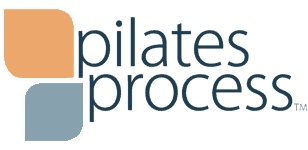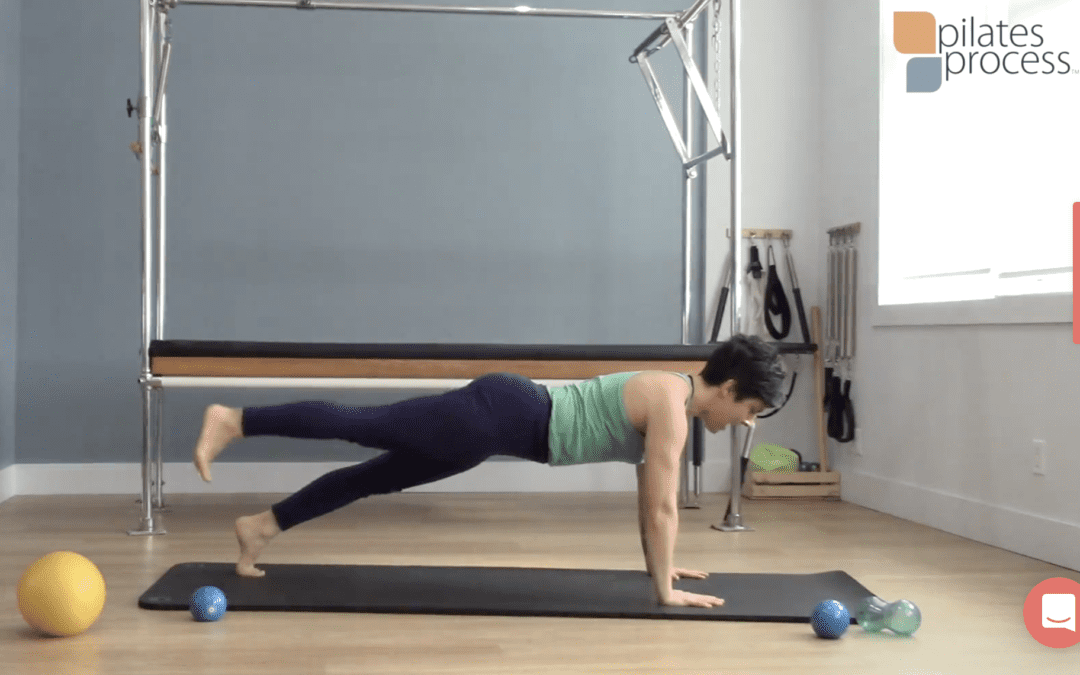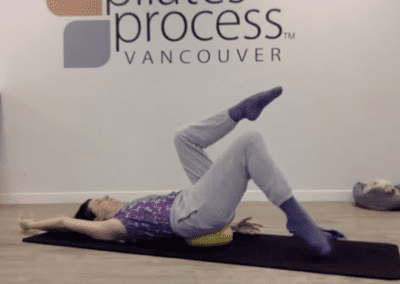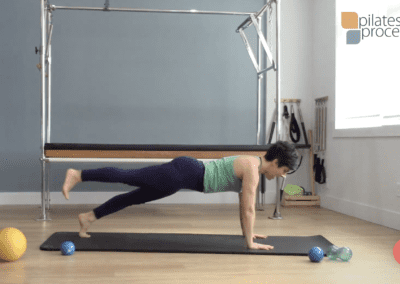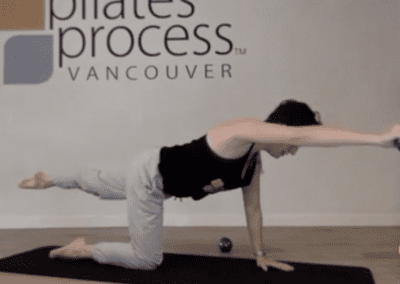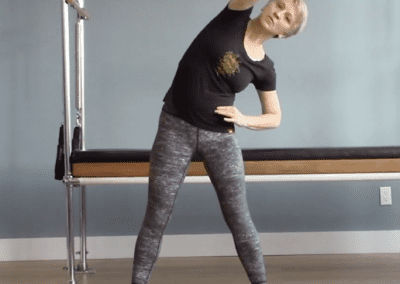Why less is more to protect joints and harness power.
Efficiency is likely the most important principle of the Pilates Process Method™ and probably the most underrated. Working out in a more efficient manner can allow you to harness more power, better protect your joints and permit a springy response that increases force absorption. But more often than not our frequently used Pilates Process cues to release muscles, let go of tension and allow more freedom of movement casts us as a method that is anti power and anti strength.
Here, I make the case for working efficiently and not always going for more.
What is efficient movement?
Efficiency means to use minimal energy to accomplish the task at hand so in the case of movement it refers to using less energy to both stabilize and perform the movement. Specific to core stability in Pilates this would mean that Knee Drops and footwork on the Reformer both require a light core response while Toe Taps and Leg Pull Front a stronger core response.
There is value in developing a dynamic core that is responsive to varying loads and challenges rather than always stabilizing at the highest possible intensity.
Here are 3 possible benefits.
1. Find your local stability.
There are small background muscles that are used to centre and guide joints dynamically centring the joint in movement – the local stabilizers. These function differently than big movement muscles. We need both. Excessive bracing can make it hard for the underlying musculature to function well.
2. Lessen joint compression.
For healthy function our joints move slightly between fully closed, compressed positions to more gaping flexible positions. The Sacro-Iliac Joints that link the spine to the pelvis are a good example. These small irregular shaped joints are located on either side of the sacrum and link the spine to the pelvis. The right and left SIJs work in opposition as we walk and run and transfer load from one side of the body to the other. One side of the joints gap to an open position while the other side compresses. The ability of these joints to oscillate slightly between these two positions is critical to healthy biomechanics in walking, running and lunges. In the Pilates world this opposition function is key in Back Splits on the Reformer or the Forward Step Up on the Chair.
If the joints are locked in one position they lose the ability to effectively support weight.
3. Access full power.
Another favourite Franklin Method quote.
“A muscle that’s always on is of no use.”
- The power in movement comes from the action of muscles shortening. If they don’t fully lengthen there is less shortening to use. If gluteals don’t lengthen in squats they don’t have the full power to recover to upright. Or consider Cross Touch on the Reformer. To harness the full power the hamstrings have to be allowed to lengthen -a controlled release but a release. They then have more power range to bring us back up.
All of these point towards the same concept:
Excessive bracing interferes with our natural, healthy biomechanics.
Here are some ways you can learn to sense this in your own body.
1. Hold a plank or push up position. How much can you let the abs release without losing the position? Can you breathe more easily? Can you differentiate between the low abs and front of hip support that is necessary, and the upper abdominal support that is often excessive? Is there a level of core support that you sense is optimal? Where the back is not stressed and you can breathe fully?
2. Do a Mermaid Stretch.
Stand with the feet shoulder distance apart for a solid base of support. Pull the naval to the spine. Feel the shoulders down and wide. Reach one arm to the ceiling keeping the core solid and go into a side bend. Sense the shoulder and back comfort.
Now try Letting the shoulders and abdominals relax. Don’t set them. Reach one arm up overhead into a side bend. What is the low back response? Now try with light core support. Is there a level of support that your body prefers?
3. Try Swim Prep.
Swim Prep (also called Bird Dog) is a commonly prescribed exercise to improve core stability. The popularity of this exercise is due to the complex stability it requirements. The oppositional cross pattern of activating the fascial sling from shoulder to hip, the challenge to avoid torso rotation, and the required stability of the supporting hip all within a dynamic low load exercise make it a common exercise prescription for back pain. But abs are not the dominant stabilizer and over doing the abdominal lift can end up restricting shoulder movement, cause the back to grip`and lose the finesse of the deep spinal stabilizing muscles that are the target.
Play with the same light core versus full core. Does a certain level offer easier stability and breathing?
In a traditional Pilates world where more is more – draw the abs in, pull the shoulders back and down and knit the ribs together – our focus on efficiency and avoiding overuse is unusual and can seem like cheating. Understanding that support levels vary per exercise and per person can help us develop more nuance in our workouts. Try playing with levels of support and as always, go with what provides the greatest ease, mobility and comfort.
Laura Helsel Gauthier
Director
Pilates Process
Writer – Presenter – Teacher
laura@pilatesprocess.ca
